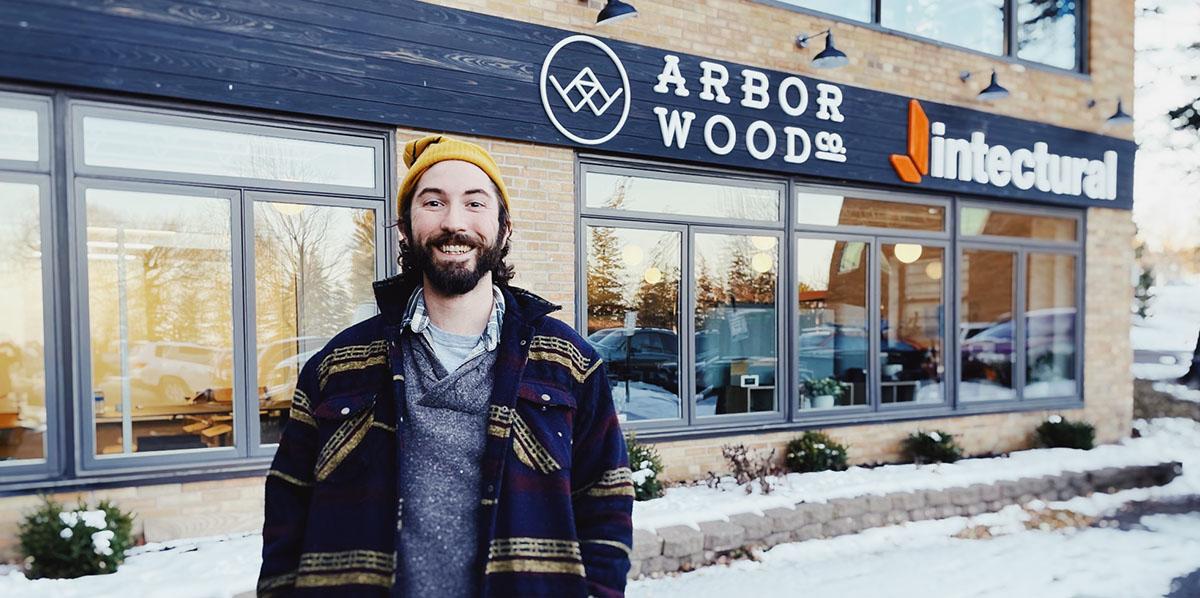McGruder’s route to this game-changing start-up included more than a few adventures.
McGruder’s high energy propelled him. Even before he graduated, he freelanced as a photographer for local bands, eventually leading to shooting for Trampled By Turtles at Red Rocks & Rhymesayers’ 20th anniversary show at the Target Center, among others. One photography stint included shooting over 100 different shows in a one-week timespan at the 2015 Homegrown Music Festival. After graduation, he embarked on a six-month exploration of the California Coast, where he took a long stop in a camper in the Redwood Forest.
In time, McGruder turned his attention to helping Duluth companies thrive. First, he worked with a few businesses, including two restaurants. Then, working as the multimedia developer for Bent Paddle Brewing, he rode the company’s growth wave from start-up to established success. During his five years with that company, his social media and multimedia campaigns helped drive the development of the business.
In 2022, McGruder joined Arbor Wood Co. and the affiliated firm, Intectural. Arbor Wood is part of a growing industry in thermally modified timber. The process heat treats wood in a low-oxygen kiln to enhance water and rot resistance and dimensional stability. Rot resistance is key. The moisture is essentially ‘baked’ out of the wood on a molecular level, leaving an equilibrium moisture content of around 6–7%. The wood is then used for super-durable, all-natural siding, decking, and other construction opportunities.
Jon Heyesen, Arbor Wood Co CEO, and his team, worked closely with Duluth’s Natural Resources Research Institute (NRRI) as they developed and tested the new technology. NRRI secured funding from the National Science Foundation and partnered with Washington State University. NRRI also obtained the required mechanical properties and accelerated aging tests for Arbor Wood to use in its processes. Heyesen is encouraged by the reception. “We now have over $10 million worth of projects in our sales pipeline ranging from retail to hotels to national park projects,” he says.
Heyesen, McGruder, and the rest of the company are working toward a broad acceptance of thermally modified wood. Along with NRRI, they are developing products that are alternatives to top-grade lumber, chemically treated wood, and tropical hardwoods. One eventual goal is to use wood that poses forest fire hazards such as small-diameter ponderosa pine and lodgepole pine ash. Future experimentation includes using Minnesota’s softer wood such as balsam fir.
“The company wants to be better stewards of our resources,” McGruder says. “Using domestic forest land creates jobs and reduces the need for exotic hardwoods, and it’s exciting to be a part of that.”
McGruder, who hails from Eden Prairie, Minn., says he often recalls his classes with UMD’s graphic design faculty. He remembers, “Vicky Lehman was my first graphic design teacher, and she taught me all about typeface design.” He recalls classes and adventures with art professors Rob Wittig, Joellen Rock, Jennifer Gordon, and others. One expedition was a milestone. “I studied graphic design in Istanbul with Robert Repinsky.”
Making a difference has always been important to McGruder. He’s used the skills he learned at UMD as his tools. “I truly feel that what I do has an impact on a local level. That drives me. I’m working to make a better place for my daughter and the area.”
